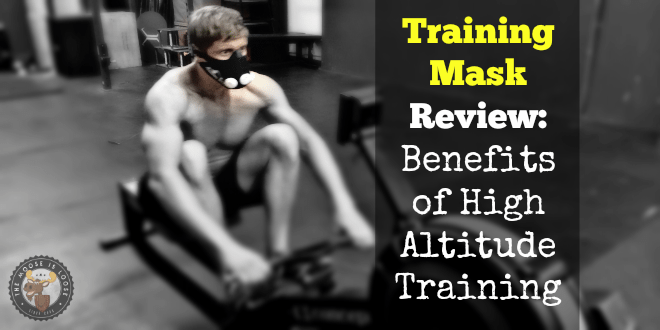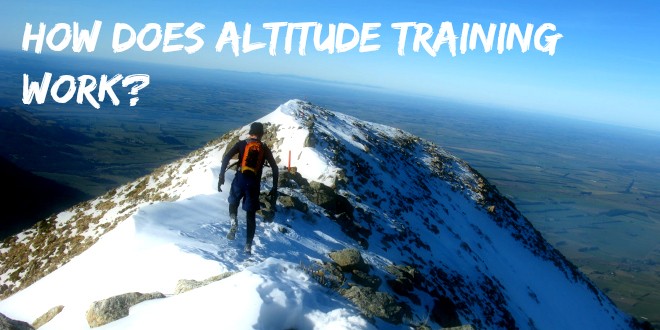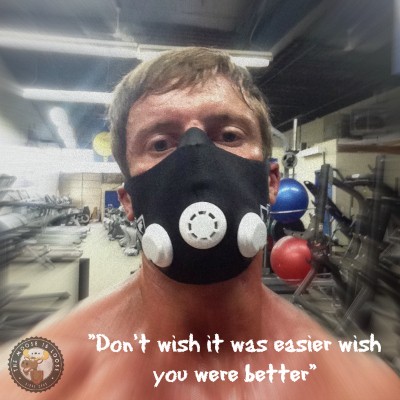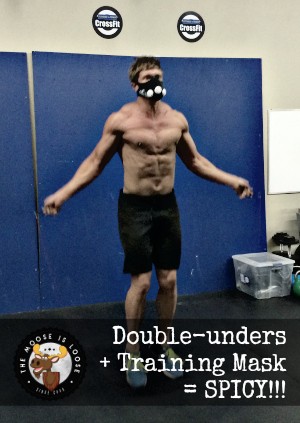Training Mask Review: Benefits of High Altitude Training

 High Altitude Training is not for the faint of heart ( literally!
). This type of training is typically used by endurance athletes at altitudes of at least 8,000 feet above sea level. Although 8,000 feet and above are most suitable, lower altitudes are also used when appropriate locations are not available [1]
.
High Altitude Training is not for the faint of heart ( literally!
). This type of training is typically used by endurance athletes at altitudes of at least 8,000 feet above sea level. Although 8,000 feet and above are most suitable, lower altitudes are also used when appropriate locations are not available [1]
.High altitude training was born from the 1968 Olympics in Mexico City. It was here that, at over 7,000 feet, endurance athletes' performances were lackluster, falling well below held records at the time. Meanwhile, anaerobic, sprint-based events saw many records broken.
As one might imagine, these effects elicited by such high elevation were promptly investigated at length by the scientific community, leading to the wealth of data we now have at our fingertips.
In this article, I'm going to take a look at just what the benefits of training at high altitudes are, as well as how you may be able to apply it to your own workout routine.

How Does Altitude Training Work?
Altitude training is an effective way of taking advantage of the differences in atmospheric pressure between sea level and higher altitudes. Generally speaking, the higher you go the ‘thinner’ the air will be because the air pressure decreases and there are fewer oxygen and nitrogen molecules per unit of air.
Subsequently, the changes in external air pressure affect change in the gaseous pressures within the body.
Red Blood Cell Volume
The most well-known effect of altitude training is an increase in red blood cell volume, caused by hypoxia or a reduction in oxygen hemoglobin saturation.
This results in the production of erythropoietin by the kidneys; this further causes the body to produce red blood cells from bone marrow as a countermeasure [2] .
What this means to the athlete is a greater amount of oxygen being delivered throughout the body, leading to greater endurance and overall stamina, helping endurance athletes perform at higher outputs for longer.
It is important, however, to note that the physiological response in this context is highly individualized, with large contrasts in the benefits (or lack thereof) reaped by different athletes.
Acclimatization and Precautions
There is an acclimatization phase that must take place as the body essentially adapts to the different external and internal gaseous pressures, and the associated mechanisms perform their various functions.
Some people may experience nausea, light-headedness, headaches, and other side effects; however, the exact adaptation period is difficult to find out as it can vary greatly from person to person [3] .
Erythropoietin or EPO is also available in synthetic form and has gained a certain amount of notoriety in the world of athletics due to its abuse by those looking to gain an edge over the competition.
While EPO can be very useful to the athlete in its natural form, its overuse can give to excessive proliferation of red blood cells and increased viscosity of the blood. This can in turn lead to blood clots, hypertension, and even heart attacks.
With this in mind, the natural athlete looking to safely and gently increase their endogenous levels of EPO without breaking any anti-doping laws will definitely want to stick to high altitude training.
Training Mask Review: No Mountain Ranges? No problem!
 No mountains? Live at sea level like me? No problem with a training mask.
No mountains? Live at sea level like me? No problem with a training mask.Why?
Because you can emulate training on a mountain range anywhere from 3,000 to 18,000 feet elevation - that's why. Do you realize that's like having the opportunity to hike up Denali ( Mount McKinley )... sheer awesomeness!
Doing the research for this post, and searching for a list of benefits of High Altitude Training, I stumbled across the Training Mask website. I was immediately drawn in. The Training Mask website is a wealth of information about the training period. And to be honest, if you are like me, I love video content if it can give me the answers to the questions I have without me needing to scour post after post.
It's been 6 weeks since I started training with the mask and I've noticed a number of benefits, including:
- I
 ncreased lung capacity and anaerobic threshold:
My endurance has gone through the roof. I've hit a pre-workout, 5k row 3 to 4 times per week and the times have got faster. The best thing to note, I'm never going above 80%. Lots in the tank post-row so I can still hit my WOD with the rest of the class. The improvements have been most evident in any workouts that require short, intense bursts of energy. I'm maintaining a higher level of output without hitting the wall as soon as I used to. The bottom line, I'm going harder, longer.
ncreased lung capacity and anaerobic threshold:
My endurance has gone through the roof. I've hit a pre-workout, 5k row 3 to 4 times per week and the times have got faster. The best thing to note, I'm never going above 80%. Lots in the tank post-row so I can still hit my WOD with the rest of the class. The improvements have been most evident in any workouts that require short, intense bursts of energy. I'm maintaining a higher level of output without hitting the wall as soon as I used to. The bottom line, I'm going harder, longer. - Increased Oxygen and energy production: As per above, I'm feeling very fit right now. The only thing I've changed is the implementation of the mask. I did a tester WOD - timed 500m row - when I started. Hit a 1:33 (and felt like dirt!). 2 weeks ago while competing at the Elysian Games in Seattle, my 3rd WOD was a 500m row followed by an 8 min cap workout consisting of rope climbs, box jump-overs, and toes-to-rings. I crushed a 1:26.7 and immediately went into the WOD and felt fantastic! The row felt like a warm-up! ;-)
- Increased Mental and physical stamina (and mental focus): All the Bane comments aside, I'm learning how to control my breathing. With this new-found control has come improved mental focus and stamina. My pacing has never been this efficient and controlled. You will see that when you first put the mask on you want to hit the workout like you normally would (all out!), but you will be humbled pretty damn quick. You are forced to stay focused on your breathing, pace the loading and work, and ultimately support the course until you're done. Any slight deviation from the path, you're done. Try it if you don't believe me. You'll see.
That pretty much sums up my review of the Training Mask.
If you are looking to make some changes to your training and push through some plateaus, I'm confident that a training mask will be the tool to help you with it.
Good luck and happy training!
Training Mask Suggested Warm-up and How to Change the Intensity (i.e. simulated elevation levels by changing the valves)
https://www.youtube.com/watch?v=kv2OHKhzgQg
And what does the Coach B-Mac have to say? Brian MacKenzie on Altitude Training and the Training Mask 2.0
https://www.dailymotion.com/video/x2rfak2




































































































